Franchise Rewind: The Hobbit: An Unexpected Journey (2012) The Hobbit: The Desolation of Smaug (2013) The Hobbit: The Battle of the Five Armies (2014)
The Hobbit: An Unexpected Journey, 2012 (Martin Freeman) New Line Cinema
The Hobbit: The Desolation of Smaug, 2013 (Ian McKellen) New Line Cinema
The Hobbit: The Battle of the Five Armies, 2014 (Evangeline Lilly) New Line Cinema
“You have no enemies here, Thorin Oakenshield. The only ill will to be found in this valley is that which you bring yourself.”
The book itself is an economical volume. It’s not as thin as people remember. Every kid I knew my age and older had a copy of it on their bookshelf. I remember it being a fun story. A teacher read it to us in kindergarten. “In a hole in the ground there lived a hobbit.” Tolkien gives us a clear focus of one character, in Bilbo Baggins, that we can follow through an epic (yet concise) journey.
Because the movie was made about seven years after the release of the final installment in the Lord of the Rings trilogy, The Return of the King, some characters could return to play younger versions of themselves. At first whiff, we get a glimpse of Frodo in earlier, less troubled times, as well as the older Bilbo (Ian Holm), as he writes his tome for his young nephew. You’ll remember this book as something Bilbo toyed with at the beginning and end of the trilogy.
Unfortunately, we never got around to seeing these movies at the time of release because we were living in a town in Upstate New York that had no movie theaters. The closest movie theater was in a town called Carmel, and it was one of those second-run dives with sticky floors and drunks in the front row. Seeing An Unexpected Journey for the first time since getting to the end of the original trilogy was like a homecoming, a meeting of old friends, much in the way Gandalf the Grey (Ian McKellen) catches up with old friend Bilbo Baggins (Martin Freeman).
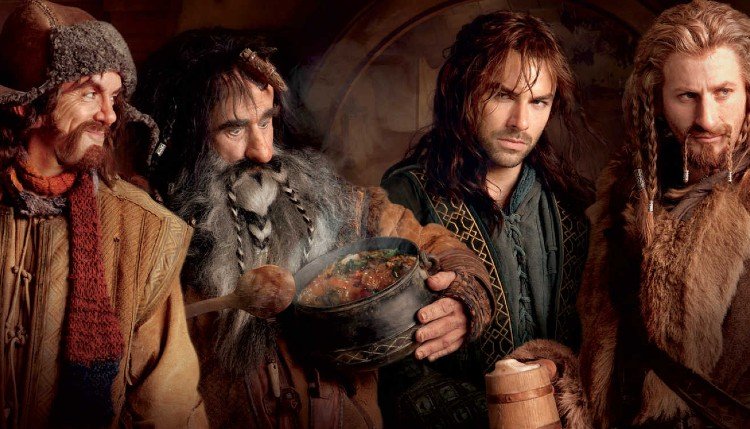
Gandalf is a bit of a scamp in this movie, however, as he invites a clutch of dwarves into Bilbo’s house to help themselves to his food. They’re on a quest to find their fallen king’s gem, the Arkenstone, after it and their land of Erebor was stolen by the dragon, Smaug. Gandalf “volunteers” Bilbo’s services as a burglar to sneak into Lonely Mountain and retrieve the Arkenstone. It sounds simple enough. We know it’s not going to be simple with a three-hour Peter Jackson adaptation of a J.R.R. Tolkien novel.
In my initial notes for Lord of the Rings: The Fellowship of the Ring, I said something to the effect that Peter Jackson puts most (if not all) contemporary directors to shame. He has the “handmade” philosophy of moviemaking, working in conjunction with state-of-the-art visual effects. His movies are like live-action art, moving animations, living comic books much in the way Sin City feels like a living graphic novel. After sampling curious delights like the Lord of the Rings trilogy and King Kong, you get the sense of living art, and where Jackson’s heart is.
You also get the feeling he works harder than any member of his crew. Unfortunately, this first movie gets a bit repetitious because of the running time and also because of the formula of getting these dwarves (plus Bilbo) into trouble with Orcs and Stone Giants and then having Gandalf sweep in on his horse to save the day. Bilbo steals Gollum’s ring and uses it in tense situations to become invisible and become a hero in his own right. This may be a controversial opinion, but I prefer Bilbo over Frodo. Bilbo is less whiny. He’s a very practical (and clever) hobbit, unlike teen-angsty Frodo, who hates the responsibility he has been given.
This movie wasn’t what I expected. Based on the running time, and the fact that Jackson has taken a 200-page book (my paperback ran 191 pages) and divided it into three movies. I thought it would be super dull and padded to the extreme. The movie was well made and never boring. My only real complaint is how perfect and polished everything looks. Jackson has created a completely artificial (yet real-looking) world. I wish filmmakers would get back into the habit of dirtying up their movies.
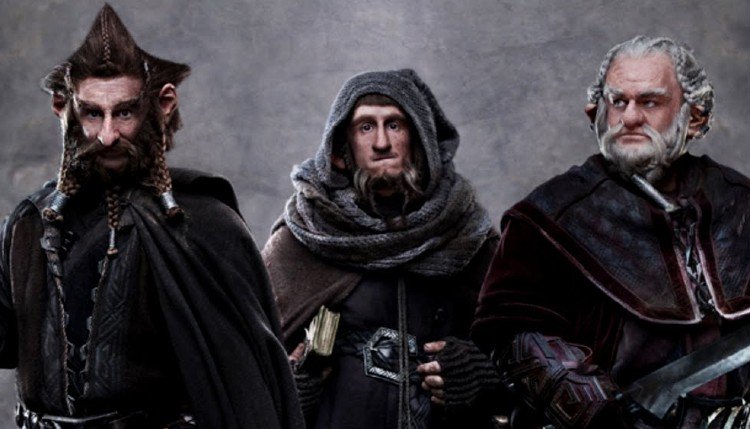
“You’ve changed, Bilbo Baggins. You’re not the same Hobbit as the one who left the Shire…”
Based on my research, the first movie covered (in copious detail) the first six chapters. You could read the book as an extended treatment. I noted that with Catching Fire (a Hunger Games movie), the book’s author, Suzanne Collins, provided an “adaptation” of her book for the screenwriters, Simon Beaufoy and Michael deBruyn. Peter Jackson (with his writers, Fran Walsh, Philippa Boyens, and Guillermo del Toro) used the book as an “adaptation” or working treatment to construct the scripts, and divided the book into three parts (roughly six chapters each) for shooting.
The only gamble, to be sure, is if audiences will go along with this structure and running time. Silly question, of course. Jackson has crafted his own cottage industry, and he’s made New Zealand a cheaper, more beautiful alternative to shooting in the States, Canada, or the U.K. Jackson plays around with the structure a little for the second movie, taking us back to the beginning of the book—in a scene he didn’t show us in the first movie—with Gandalf (Ian McKellen) meeting the leader of the dwarves, Thorin (Richard Armitage), to discuss retaking the Lonely Mountain.
From there, we move back to where we were after the latest Orc attack at the trees on the cliff. Gandalf arranges for shelter from shapeshifter, Beorn, who takes them to Mirkwood, and once again, Gandalf deserts them after warning them to stay on the path. These being thick-headed dwarves, they ignore Gandalf’s warning, and they wind up being captured by spiders. Bilbo (Martin Freeman), using his ring stolen from Gollum, frees them. They flee but the giant spiders give chase. They are rescued by Wood-elves, Tauriel (Evangeline Lilly) and Legolas (Orlando Bloom) who then “arrest” the elves and put them in their prison.
I don’t know how you can just do that. Can you simply seize people and imprison them? Would they be considered migrants, or something? It’s good to see Legolas again. He was one of my favorite characters from the original trilogy. Bloom looks like he’s gained some weight, but he’s supposed to be playing a much younger version of his character. In this prequel-obsessed pop culture, the only actor to emerge unscathed from comparisons of his earlier appearance was Ian McDiarmid, who played Senator (and later Emperor) Palpatine in the Star Wars franchise. He had the benefit of being covered in makeup for his earlier appearances.
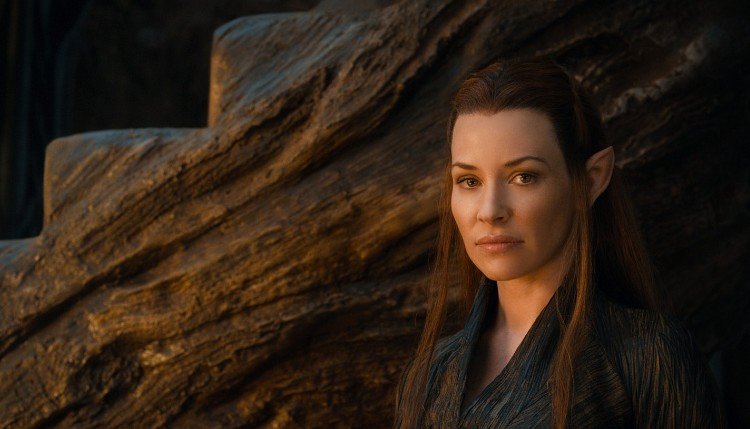
Bilbo, once again, uses his ring to free the dwarves. This is repetitious, and the ring becomes a convenient crutch to create a narrative escape. I wouldn’t call it lazy. I get that Tolkien was writing a fantastical saga, the simplest kind of storytelling, but my brain wants more of a challenge. How about Bilbo dropping the ring once or twice? Maybe it gets stolen from him and he has to work that much harder to rescue his friends? The ring is the equivalent of bringing a flamethrower to a knife fight. It’s not much of a challenge when you can easily escape every time.
Tauriel and Legolas track the dwarves to the lakeside town of Esgaroth, run by an idiot Mayor (Stephen Fry), whom, I suspect, has made a side-deal with Smaug not to destroy them. I wonder what the analogy of the book is. In The Lord of the Rings, I speculated the “one ring to rule them all” was the hydrogen bomb. What does Smaug represent? An awesome world power that steals from other nations? If anybody thinks I’m reading too much into these stories, they don’t know that Tolkien’s work was steeped in analogy and symbolism.
Tolkien, like his friend and contemporary C.S. Lewis, was a myth-maker and a product of his time. When the dwarves finally reach the Lonely Mountain, they are about ready to give up because the hidden door doesn’t open the first time. It takes Bilbo to analyze the bit of poetry that instructs people on how to best open the damned door. It involves a thrush* and a beam of light to guide a key. The door opens, Bilbo sneaks in, puts on his ring, and sets about looking for the Arkenstone.
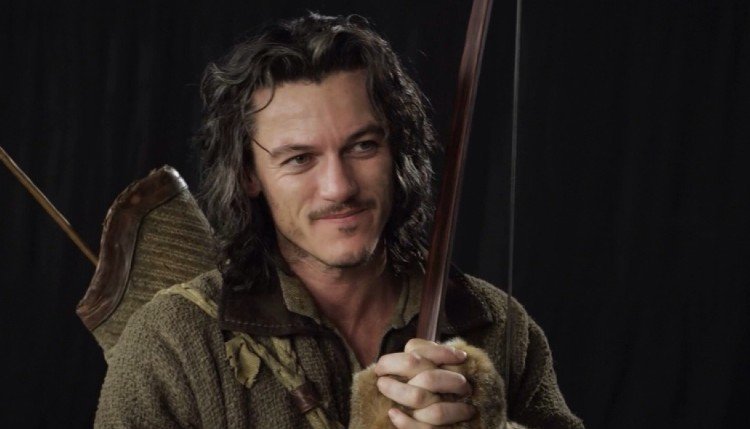
Smaug, a truly beautiful and terrifying creation, (voice of Benedict Cumberbatch) wakes and tries to kill Bilbo. The dwarves finally come in to help. Bilbo finds the stone, and the dwarves try to lead Smaug into an Alien 3-esque trap, by covering him in molten gold (not the beer, the real thing), but Smaug, with his very thick skin, escapes to wreak havoc in Esgaroth. He looks really pretty for about a minute covered in gold, but he shakes it off like a bad case of fleas.
This is where we get to the dead stop, because we know what’s going to happen next. This is the first time we (meaning the audience) demand the story be continued, but instead we’re treated to Ed Sheeran. This is the first Ed Sheeran song I’ve ever heard. Can you believe that? Apparently, the guy is a big music star, a singer or something. I guess he sounds okay. I don’t much care. Sounds boring. Whatever. I’d much rather have some closure on the whole “Arkenstone Affair**.”
“Farewell, Master Burglar. Go back to your books… and your armchair… plant your trees, watch them grow. If more people… valued home above gold… this world would be a merrier… place…”
I forgot about the third movie! How about that? There’s a third Hobbit movie. It’s not like I didn’t know there was a third Hobbit movie, but I was trapped near the inner circle of thought and I use at least 58% of my brain, so I had to look at Twilight movies and Star Trek movies, and it was hard work. The Battle of the Five Armies picks up where the previous movie, The Desolation of Smaug left off.
Smaug flapped his dragon wings and headed toward the lakeside town, reigning havoc and destruction, engulfing the world in darkness, and such. He’s not a morning person, okay? I’m like that, too. Bard (Luke Evans), introduced in the second movie, finds the black arrow and, possessing Hawkeye-like instincts, pierces Smaug’s heart, sending his falling corpse to destroy some more of the town.
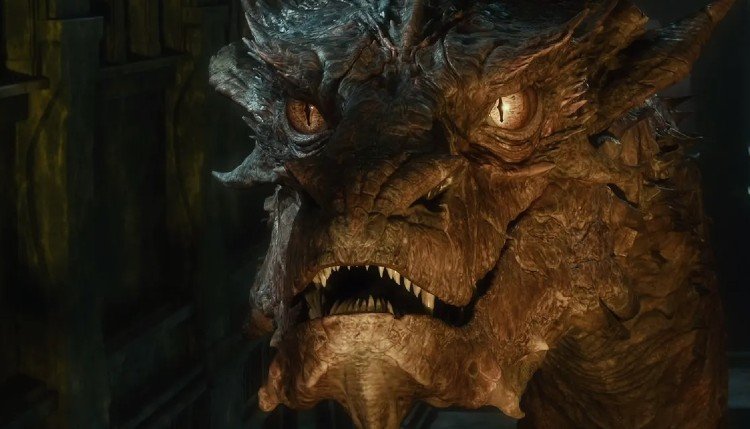
With Smaug dead and Thorin (Richard Armitage), the dwarf king, refusing to give anybody their fair share of the gold he pilfered in his reign of terror, war naturally results. The Elves send in their guys and the Dwarves send in their guys, with humans making up the third army, but unfortunately the Orcs also scramble into the fray. It all goes back to Tolkien’s central idea: greed is stupid, or words to that effect, and instead of a “ring to rule them all,” it’s the unimaginable value of the Arkenstone; just another bauble to be coveted.
Bilbo (Martin Freeman) is once again the wisest character in a very narrow field of idiots, but Tauriel (Evangeline Lilly) and Legolas (Orlando Bloom) provide some decent backup. They’re not big fans of the dwarves, but they hate the Orc more, so they offer assistance where it is needed to eradicate those ghouls. Director Peter Jackson, once again, outdoes himself with his ever-expansive battle scenes, but this time around, it’s less of a live-action animation fantasy.
The exterior colors look cool (thus adding more realism) as opposed to the unnatural warmth and glow of the previous movies. The Battle of the Five Armies would be a much gorier film than the previous movies if there was blood. There doesn’t seem to be any blood … anywhere. There is a lot of dirt and grime and (impressively) sweat, but very little, if any, blood. Romance was also sadly lacking in this trilogy. Kili (Aidan Turner) and Tauriel’s strange infatuation was relegated to a subplot, where it really was needed (at least more than one interminable battle sequence after another).
Thorin and Orc leader, Azog the Defiler (great name, by the way), kill each other in the final battle and Dain is crowned king. At least, that’s what the synopsis said. I didn’t pick up on any of this while watching the movie. I think, by that point, I was more invested in Bilbo (who disappears for stretches), Legolas and Tauriel, Kili, and Bard than any of the dwarf soap opera nonsense with Thorin. Oddly, the battle scenes are less interesting than everything. It’s like Jedi after Jabba the Hutt is dispatched. It just turns into another version of the first movie.
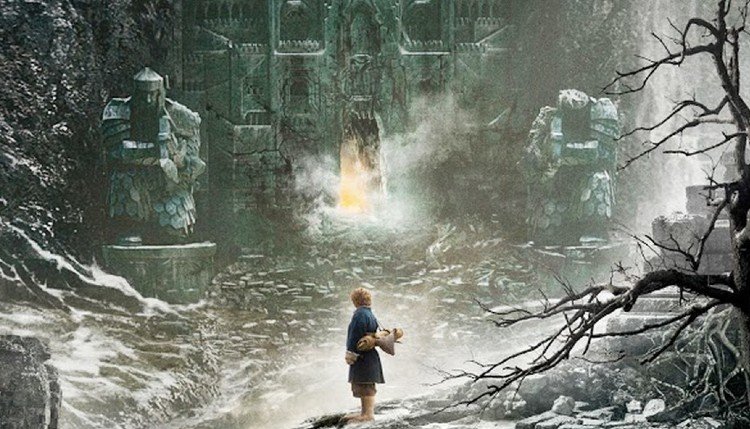
With Smaug vanquished, the movie becomes dull, but this might go back to the idea that The Hobbit should never have been attempted as a three-part movie franchise. Tolkien’s chapters were vignettes, little episodes along the way with the same structure as his Lord of the Rings trilogy. Bilbo returns home to find his possessions being sold off at auction because everybody thought he had died. That’s rude. I thought hobbits were jolly, live and let live-types, but no—they’re JUST LIKE US!
When he gets himself settled into his life again, Bilbo ages into Ian Holm at the moment Gandalf visits him on his birthday, and we have the official connective tissue that introduces The Fellowship of the Rings. I enjoyed these movies far more than I thought I would, but they were all stretched pretty thin. Peter Jackson just doesn’t want to stop. At some point in the future, he’ll dig up another classic and turn it into a three-part epic cinematic saga.
He’s one of the few successful working filmmakers out there who loves his job, and he still brings the zeal and youthful enthusiasm of the gore-obsessed 25-year-old making his first movie, Bad Taste. Bad Taste was a movie about aliens who invade New Zealand and capture humans to be used as meat for their intergalactic fast-food franchise. That’s Peter Jackson in a nutshell.
*Open channel D!
**Again, open channel D!

